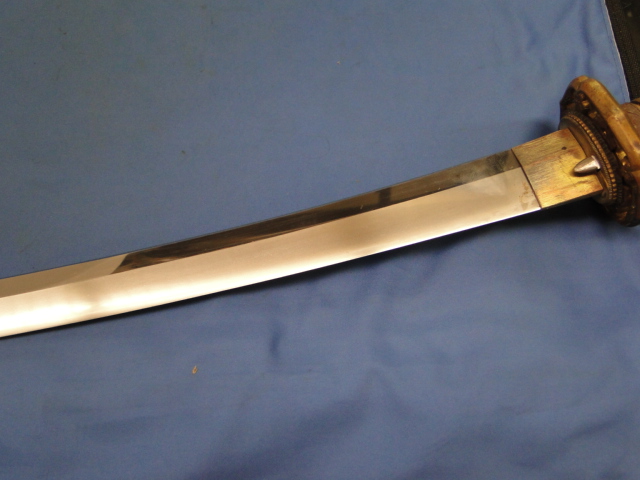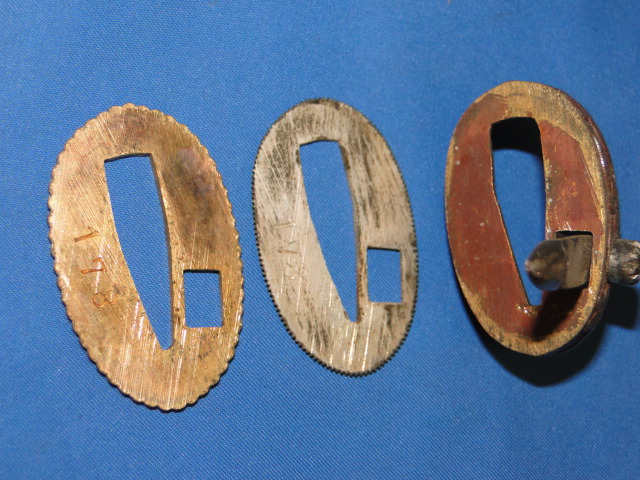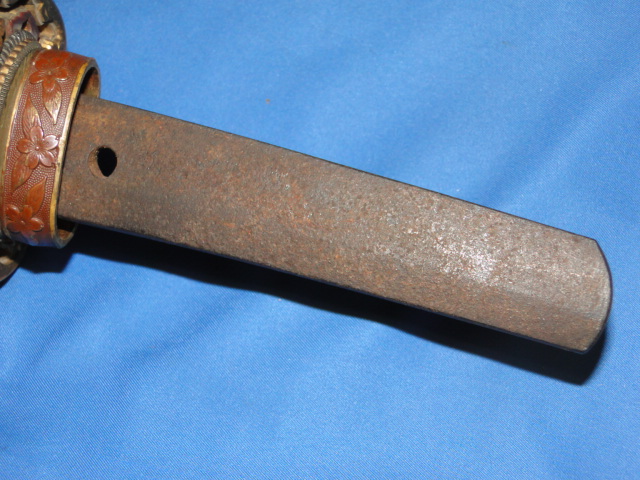SAMURAI SWORD 47 - 1800's WAKISASHI
This is a Japanese Wakisashi sword. The blade was produced during the 1800's and has been dressed in the
WWII Imperial army attire.
The pommel is the metal type with Chrysanthemum designs on the sides and top. A metal lanyard loop has been
attached to the top. The Tsuba is also the standard used during WWII. It is an early war with the hollowed
format.
The Tsuba is standard for the Imperial Japanese army. The scabbard is made of metal and has two rings at
mid-section. The fitting closest to the throat has a single suspension ring.

This photo provides a side view of the tsuba and spacers. It shows the location of the pieces when the sword is
put all together. The signature is visible in the tang. A single hole has been drilled.


|
This page is a recognition and identification guide for Samurai swords.
Multiple detailed photos of a specific sample are provided. Descriptions point
out clearly defined points that should be noted.
One of the most commonly asked questions is "How much is my Samurai Sword worth?".
A price guide is included here to address this question. The value of the swords is
reviewed over a period of several years. A trend can be observed. The present worth
of the edge weapons in the collector's market is illustrated.
This service is provided free of charge to the visitor/enthusiast courtesy of
MilitaryItems.com,
a company dedicated to the preservation of military history and to providing quality
military antiques and collectibles to museums, institutions and the general public.
|
|


The blade retains the original polish. It has a curvature that is more pronounced than normal. The tip is also of an
elongated style. The Habaki is classical WWII period. The balde measured approximately 22 inches.
When the handle is taken apart a couple of hand written characters become visible.







The tang has a curved ending. It si signed on one side only. It retains the original size, the sword has not
been shortened.
The Tsuba and spacers have been stamped with a production number. All the components have the same number. This
case is known as "Matching numbers".







This Samurai Sword may be currently reproduced.
It is becoming more difficult to be able to tell the fake ones from the real ones because
the quality of the reproductions is improving. The collector must become familiarized with
the construction style and materials employed in the manufacturing of this item.
Attention to the details is critical in order to be able to determine the authenticity of
the collectible.
If you have an interest is seeing other Japanese Samurai swords, you can do so by going to our
Japanese Samurai Swords Price Guide
identification guide. Where we cover Samurai swords from all periods.
| 




